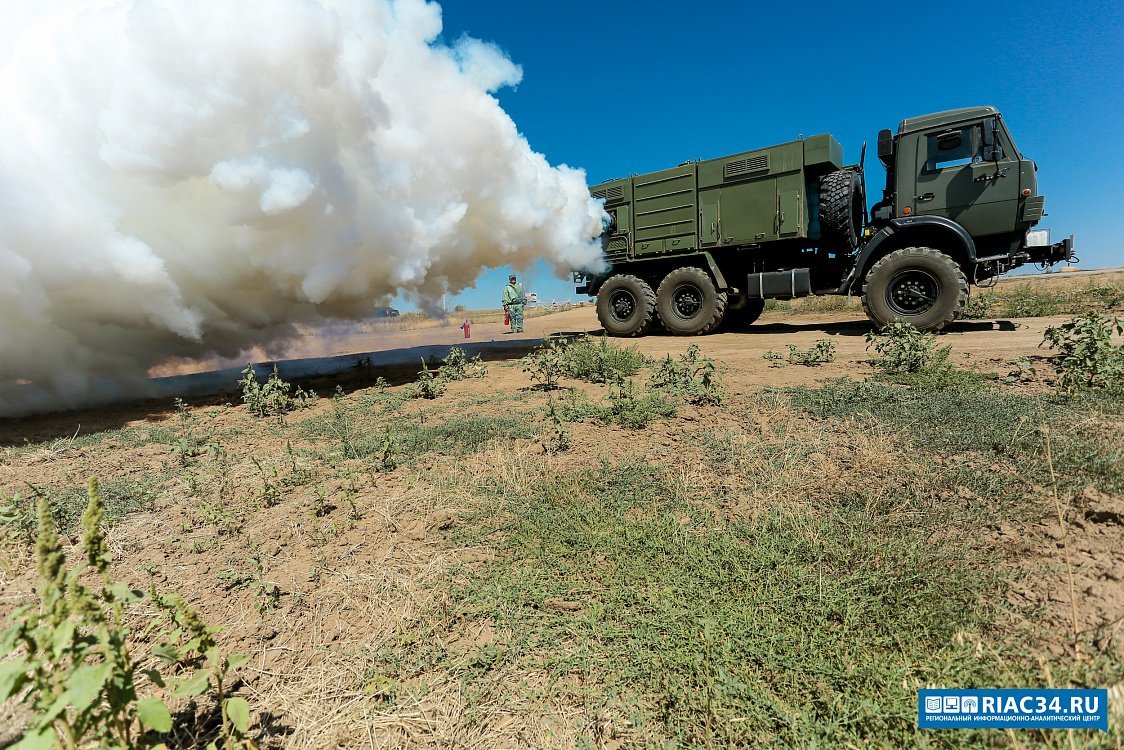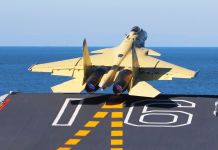On May 24, 2023, Russia carried out a security exercise near the Crimean (Kerch) Bridge, connecting the city of Kerch to the peninsula. The drill involved using a smokescreen to obscure the bridge.
France Advances Work On ‘Super Rafale’ F5 Variant Despite Pact With Germany & Spain On 6th-Gen FCAS – Reports
However, in its intelligence update on May 29, the UK Ministry of Defense (MoD) claimed that Russian military forces have been unsuccessful in effectively implementing their smoke camouflage tactics during combat operations in Ukraine.
According to the ministry, as part of the security exercises conducted near the Crimean (Kerch) Bridge, Russian forces deployed TDA-3 truck-mounted smoke generators to generate a smoke screen that partially concealed the bridge.
The TDA-3 used in the deployment of the smoke screen likely belonged to the 28th Brigade of Russia’s Nuclear, Biological, and Chemical Protection Troops, the ministry added.
The UK MoD underscored the significance placed by Russia on the incorporation of smoke as a crucial element of camouflage.
Latest Defence Intelligence update on the situation in Ukraine – 29 May 2023.
Find out more about Defence Intelligence's use of language: https://t.co/haoFvX7N4d
?? #StandWithUkraine ?? pic.twitter.com/j8wICHHYiP
— Ministry of Defence ?? (@DefenceHQ) May 29, 2023
However, the practical implementation of Russian camouflage techniques had proven ineffective throughout the conflict in Ukraine.
UK analysts attribute this ineffectiveness to two key factors: the absence of a robust central planning system and low combat discipline at lower levels of command within the Russian military.
Due to these difficulties, camouflage tactics have been unable to deliver the intended results on the battlefield.
The Russian army has long employed smoke vehicles as an integral component of its chemical warfare battalions. Even before the outbreak of the war, Russian forces often incorporated such tactics during military exercises.

Last year, in response to the destructive impact of US-supplied HIMARS systems targeting Russian forces, Moscow deployed decoy barges fitted with radar reflectors and smokescreen to safeguard the crucial Kerch bridge.
Obscurant smoke, defined as an aerosol cloud deployed to obstruct the line of sight between an observer and a target, is a crucial asset in military operations.
While not categorized as chemical weapons, these substances are classified as military chemical compounds, despite some possessing toxic properties.
Furthermore, such smoke consists of diverse chemical agents that can potentially impair the functionality of electro-optical devices operating in the visual and infrared wavebands.
Can Smoke Screens Thwart Attacks?
The underlying mechanism of smoke screen technology is uncomplicated. It involves the combination of two compounds – a liquid and a crystalline substance – which are introduced into a stream of hot gases.
Russian Sukhoi Su-35, China’s J-10 Fighters ‘Steal The Thunder’ At LIMA 2023 With Spectacular Aerobatic Display
This mixture is then expelled outward, forming a dense aerosol cloud with a distinct white appearance.
The primary objective of this smoke screen is to impede both visual and infrared (IR) observation, thereby offering a degree of protection against highly accurate weapons.
The duration and density of the smoke cloud generated can be adjusted according to specific requirements. Depending on the quantity and concentration of smoke produced, the cloud can persist for a period ranging from two to six hours, effectively concealing targeted areas.
Experts speculate that a critical objective of a recent military exercise by Moscow was also to assess the feasibility of effectively concealing the Kerch Bridge to counter potential cruise missile attacks.
Since the delivery of Storm Shadow cruise missiles to Ukraine, a consensus among Russian commentators and military experts has emerged regarding the vulnerability of the Kerch Bridge.

Given the bridge’s significance as a vital link between occupied Crimea and mainland Russia, it has drawn considerable attention from strategists seeking to mitigate the risks posed by such precision-guided weaponry.
Disrupting the bridge’s functionality before any Ukrainian offensive on the peninsula would severely hamper the ability of Russian forces to receive reinforcements or essential supplies.
Notably, the destructive potential of the missile’s unitary warhead, capable of accommodating up to 450 kilograms of explosives, poses a significant threat even to well-protected enemy targets, intensifying the strategic considerations surrounding the bridge’s protection.
However, a former British Army officer expressed skepticism regarding the effectiveness of using a smoke screen tactic.
Steve Brown, a former British Army Ammunition Specialist and Bomb Disposal Officer, argued that using smoke against a stationary object may partially confuse the missile’s terminal IR guidance but not enough to cause a complete miss.
The size and composition of the Kerch bridge, spanning 18 kilometers with a four-lane highway and two-track railway, make complete concealment with smoke impractical.
Brown further explained that the smoke would only disrupt the missile’s terminal guidance even if the missile’s intended target location on the bridge is known. Therefore, the missile’s other guidance features would still ensure it hits the bridge somewhere.
- Contact the author at ashishmichel(at)gmail.com
- Follow EurAsian Times on Google News




